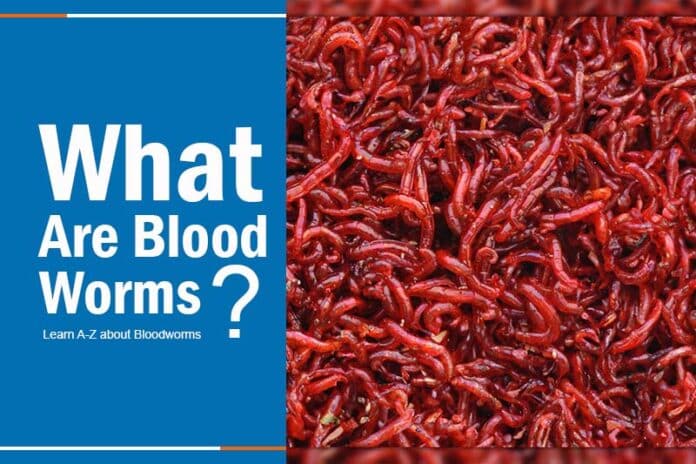In their natural habitats, fish maintain their health by consuming a variety of smaller aquatic organisms, such as zooplankton, other smaller fish, and worms.
For pet fish, it’s crucial to replicate their natural diet to ensure their well-being. While there are numerous fish feed pellets available at pet stores, offering a diverse range of food is beneficial.
A popular treat for pet fish is frozen worms, with bloodworms and their eggs being particularly favored. If you’re a first-time fish owner or looking to enrich your fish’s diet, this article is for you. We’ll explore the world of bloodworms, delve into their nutritional benefits, and discuss why introducing both live and frozen bloodworms to your fish’s diet can be advantageous.
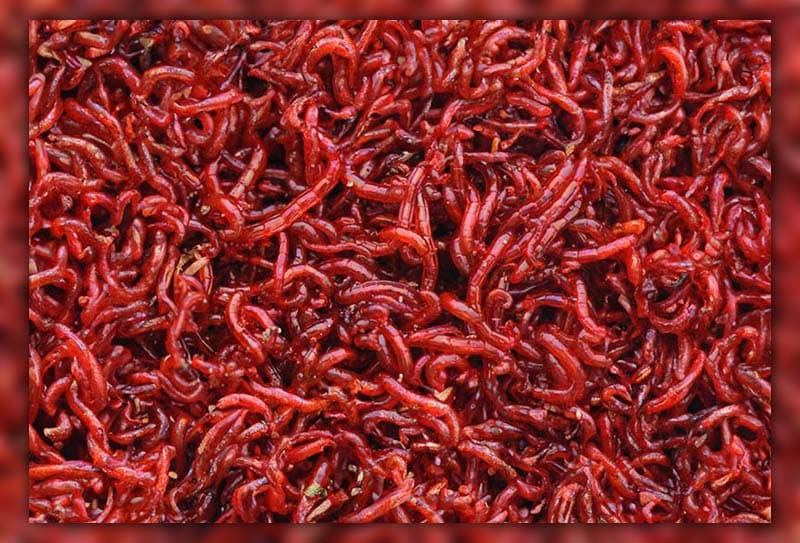
What Are Bloodworms?
If you’re an enthusiast of goldfish or someone who often visits freshwater ponds, the term ‘bloodworms’ is likely familiar to you. However, for those new to the concept, bloodworms might sound a bit alarming.
Contrary to what their name might suggest, bloodworms do not ingest blood. They are actually named for their striking red hue. Bloodworms are the larval stage of midge flies, which are non-parasitic and do not bite. Eventually, these larvae metamorphose into adult flies.
The term “bloodworms” is used to refer to various worms, but they are most recognizable by their distinctive red color. This coloration comes from a particular iron-containing protein in their blood and tissues. One common type found in shallow waters is known by the scientific name Glycera dibranchiata.
Occupying a foundational trophic level in the food web, bloodworms are a natural prey for many aquatic creatures. They are a staple protein source for pet fish, and other animals such as frogs, crabs, shrimps, snails, salamanders, and even turtles also find them to be a tasty snack.
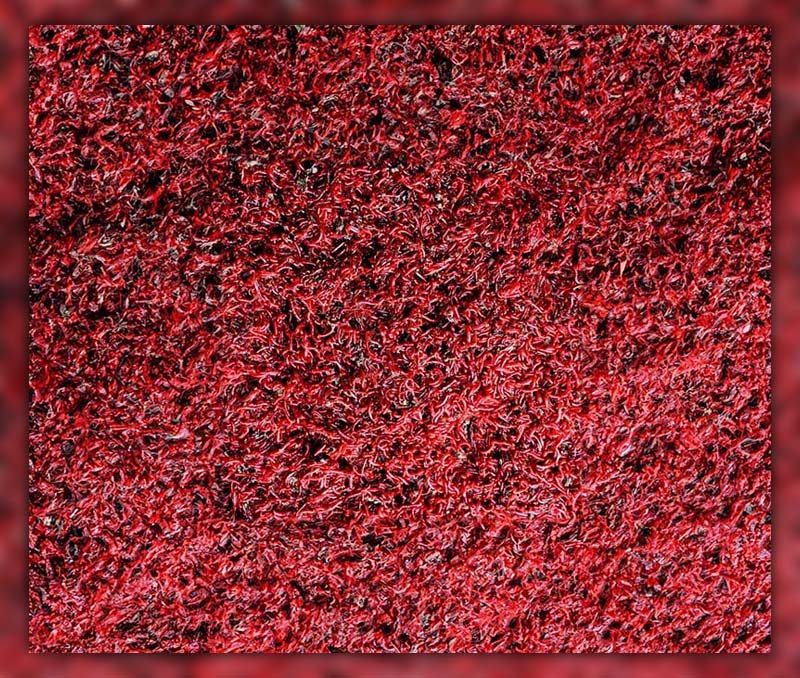
Where do you find Bloodworm?
Bloodworms thrive in the moist soil near freshwater environments, making them a readily accessible element in the aquatic food web, offering crucial amino acids to fish. They are commonly used as bait by anglers and as nutritious feed in the aquaculture industry.
Available widely in pet stores, bloodworms can be purchased in frozen or freeze-dried form. For those interested in aquaculture, establishing a bloodworm farm can be a viable venture, supplying gelatinous egg sacs or live worms to aquarium enthusiasts and fish farmers.
Rearing bloodworms is a detailed process that can provide a steady food supply for both large-scale and small-scale aquaculture operations. While bloodworms are a popular choice, other protein-rich foods like adult flies, midge flies, and shrimp are also integral to the diets of wild and domestic fish, each with their own unique characteristics, such as the notoriously biting midge flies.
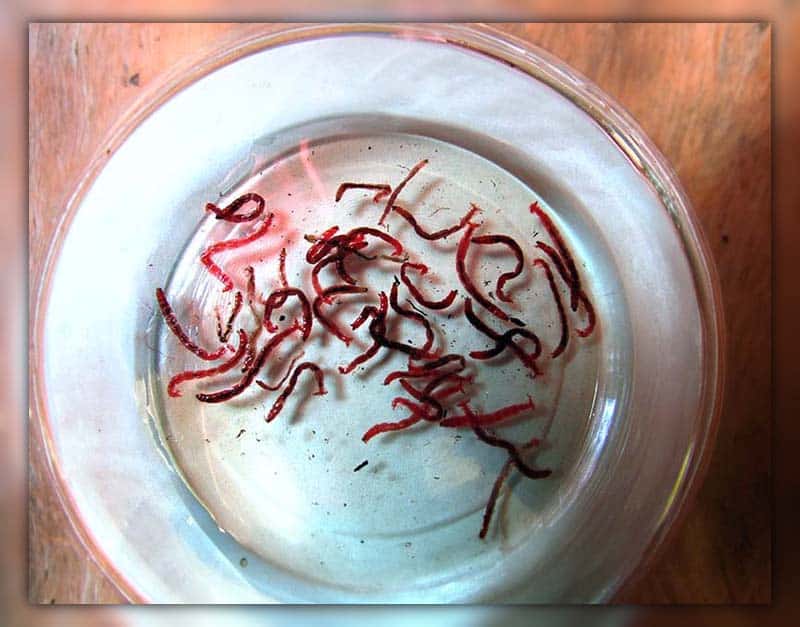
To simulate natural hunting behaviors and stimulate their predatory instincts, providing live bloodworms to captive fish can be an engaging and nutritious activity. These wriggly larvae are often a hit with pet fish, who may consume them as treats or part of their regular diet.
When considering live feed options such as ghost shrimp, Amano shrimp, African cichlids, or smaller fish, it’s important to select appropriately sized prey to ensure that your fish are the predators, not the prey, in their own habitat. The size and type of live protein you introduce to your aquarium should align with the size and species of your fish to maintain a healthy and balanced ecosystem.
Types of Bloodworms
If you’ve been a long-time fish owner or enthusiast, you’ve likely come across bloodworms and the different options for obtaining them. There are various forms of bloodworms, each with its own advantages, depending on your needs. You can purchase them in freeze-dried, frozen, or live conditions. Here’s a brief overview of each type of bloodworm:
Freeze-Dried Bloodworms
If you’re seeking a hassle-free way to incorporate bloodworms into your fish’s diet, freeze-dried bloodworms are an excellent choice. They offer the advantage of easy portion control as they don’t require any preparation or thawing. Freeze-dried bloodworms are also a cost-effective option for those looking to purchase them.
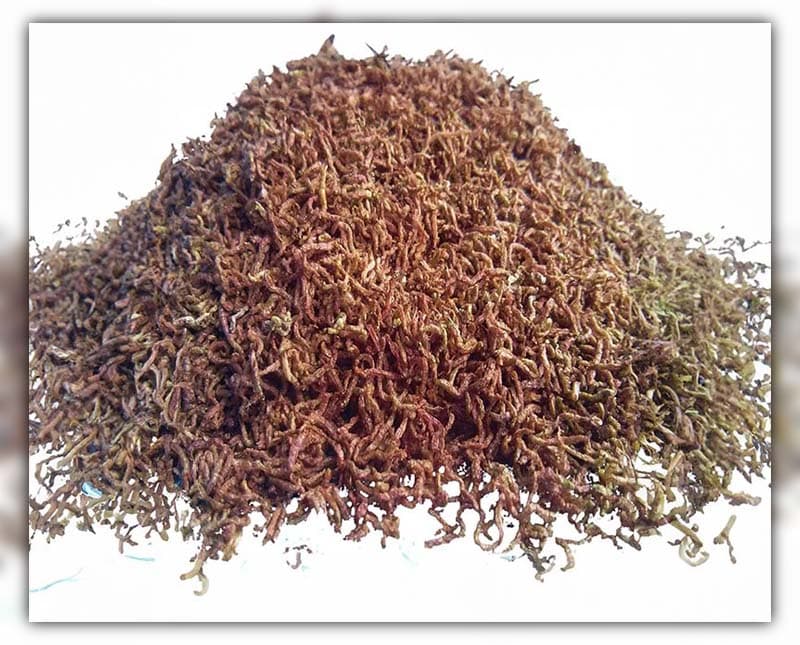
However, it’s important to pay attention to the label of the bloodworms you’re buying, as there are several quality levels available for freeze-dried bloodworms. While the lower-priced options may be tempting, they might not provide the benefits associated with bloodworms. In such cases, investing in a higher-quality brand is likely to be more beneficial.
It’s worth noting that freeze-dried bloodworms are the least stimulating and nutrient-rich option for your fish compared to live bloodworms. They may not excite your fish in the same way or lead to noticeable changes in their behavior as fresh bloodworms would. Live bloodworms tend to trigger your fish’s hunting instincts, making them more active when included in their diet.
Frozen Bloodworms
Another option to consider when feeding bloodworms to your fish is frozen bloodworms. Many fish enthusiasts prefer using frozen bloodworms as a convenient feeding choice. Frozen bloodworms are easy to acquire and store, making them a practical option. You can simply take out a portion to feed your aquarium fish whenever needed, and they can be stored for up to 6 weeks, allowing for comfortable feeding intervals.
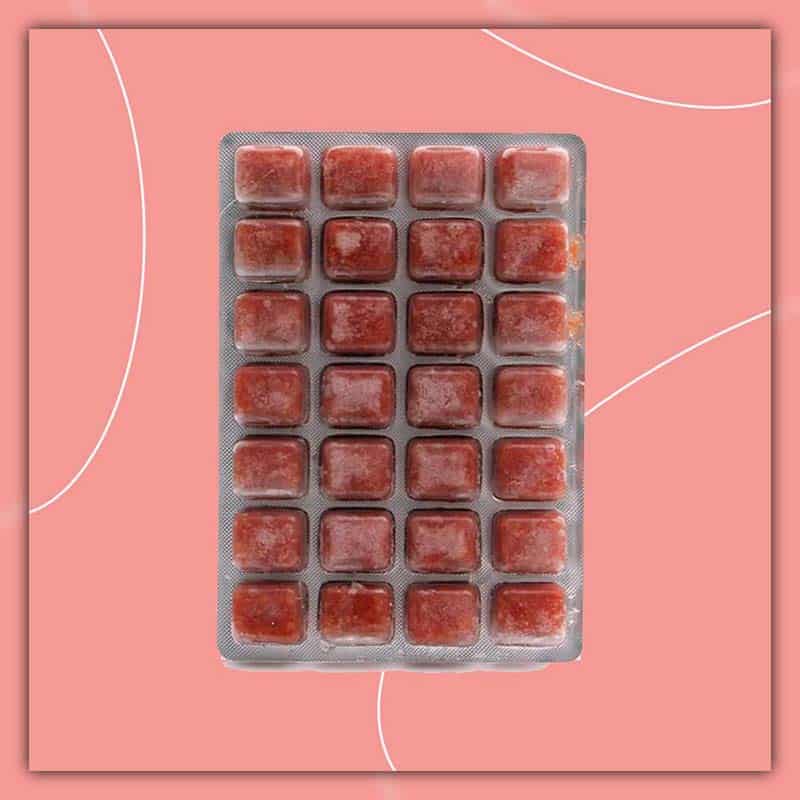
The freezing process also reduces the risk of potential illnesses or infections that could affect your fish, making frozen bloodworms a safe choice, especially if you’re new to feeding bloodworms to your fish. These bloodworms require no special preparation and are unlikely to harm your fish.
Moreover, using frozen bloodworms gives you better control over the quantity of food you provide to your fish. Unlike live bloodworms, you can evenly distribute frozen bloodworms throughout the aquarium, ensuring that all your fish have the opportunity to enjoy them.
Bloodworm Gel
Many fishkeepers have a strong preference for gel-based fish food, especially when dealing with picky eaters that won’t consume pellets or flakes. This becomes particularly important when live foods are not readily available, and that’s where gel-based cuisine can be a lifesaver.
Bloodworm gel food provides essential proteins and vitamins that are crucial for the health and well-being of your carnivorous fish in captivity. It comes in various flavors, including bloodworms, catering to the dietary preferences of your fish.
Creating bloodworm gel food at home is also an option. You can achieve this by blending bloodworms with traditional gel food recipes. However, if you have access to live bloodworms, it’s generally more ideal to feed them directly to your fish rather than converting them into gel-based food.
Live Bloodworms
Another option for feeding your fish is to offer them live bloodworms as part of their diet. Some fish keepers opt for live bloodworms because they consider it the most sanitary way to nourish their fish, and there is some truth to this belief. Fresh live bloodworms are generally preferred over thawed or freeze-dried alternatives.
Live bloodworms are rich in nutrients and serve as a vitamin-packed source of fish food. Feeding live bloodworms to your fish can be highly beneficial, especially if you plan to breed them soon. Additionally, it’s easier to administer live bloodworms using a fish-feeding cone.
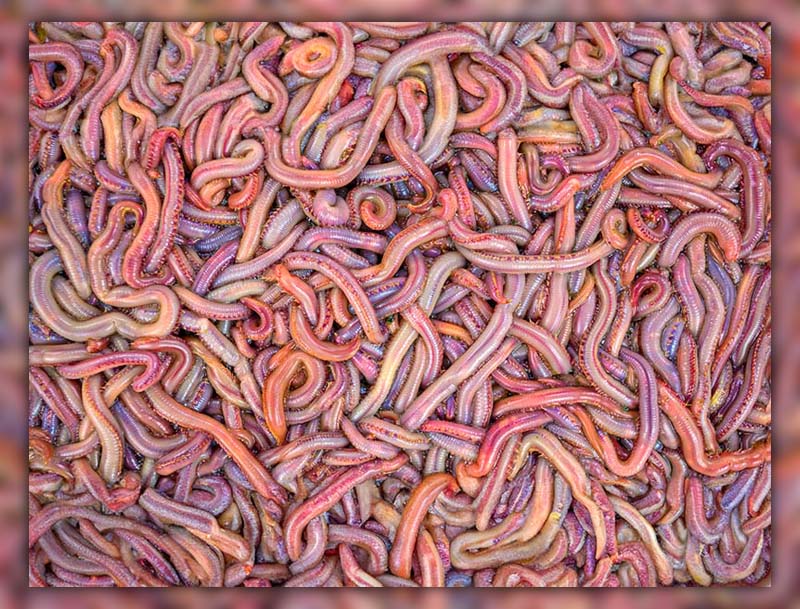
Keeping fish in small plastic containers can lead to inactivity, but feeding them bloodworms can stimulate their hunting instincts and make them more active. Furthermore, as bloodworms consume zooplankton, they help control algae in the aquarium.
It’s important to note that frozen or freeze-dried bloodworms may not have the same effect as live bloodworms in terms of enhancing your fish’s activity.
However, it’s worth mentioning that live bloodworms have a limited shelf life. Once purchased, you typically have only two to three days to feed them to your fish before they expire. For this reason, while live bloodworms are nutritious and can stimulate your fish’s hunting instincts, many people prefer frozen or freeze-dried bloodworms for their convenience and longer shelf life.
Uses of Bloodworms
Bloodworms are renowned for their versatility in serving as both a top-notch fish bait for freshwater or saltwater fishing and a preferred food source for aquarium fish due to their high appeal to fish. These wriggling creatures are highly sought after in the angler market, especially by larger predatory fish that relish their meaty texture.
In aquariums, bloodworms can be an excellent dietary choice, depending on the size of your fish. For larger fish, mature 14-inch bloodworms are ideal, while younger bloodworms can be used to provide a varied diet for smaller fish.
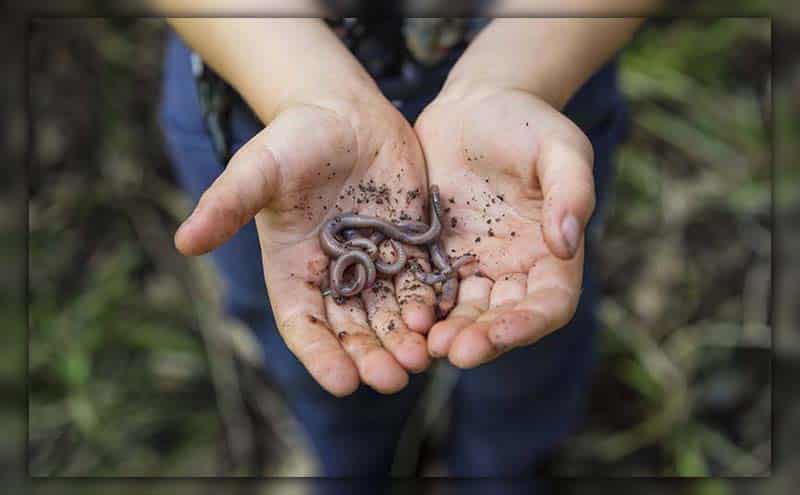
Bloodworms can also serve as a natural laxative for fish. If you suspect that your fish might be constipated, offering them bloodworms can help restore their digestive systems. However, it’s important not to overfeed bloodworms daily in an attempt to treat constipation, as this can lead to regular constipation issues.
For finicky eaters that refuse regular fish feed, introducing bloodworms into their diet can often entice them to eat. Live bloodworms can create a frenzy of activity in your aquarium as fish eagerly chase and consume them. These bloodworm treats also provide valuable nutrients, with their iron and protein content giving your fish an energy boost.
Whether your fish prefer live or frozen bloodworms, they will benefit from the high protein and vitamin content of this meal.
Can betta fish eat bloodworms?
Before feeding your betta fish bloodworms, there are some important considerations to keep in mind:
- Allow the bloodworms to soak in water for a brief period before introducing them to your betta’s tank.
- After placing the worms in the tank, give them a few minutes to settle. Remove any uneaten portions promptly, as leftover pieces can decompose and elevate the ammonia levels in the tank.
- Betta fish may continue to eat even when they are full, so be cautious not to overfeed them, as this can lead to issues.
- To prevent constipation, limit the intake of bloodworms to 1-2 worms per meal. Avoid dropping an entire frozen cube into the tank.
- Pay attention to the frequency of feeding. Bloodworms are rich in protein and fat, and overfeeding can lead to health problems for your betta. Therefore, only offer these fish bloodworms once or twice a week.
Breeding Conditions for Bloodworms
You might think that breeding bloodworms would be a cost-effective and practical alternative to purchasing live ones. Breeding your own bloodworms can reduce the risk of parasites and disease transmission while allowing you to control their breeding environment. However, it’s worth noting that most beginners find bloodworm breeding challenging and impractical.
Unlike fish breeding, raising bloodworms can be quite demanding because it requires a suitable environment for them to develop into flies. The adult flies are prone to flying away to lay their bloodworm eggs elsewhere, making containment difficult.
Another crucial consideration is where to source bloodworm eggs. Using infected bloodworm eggs can introduce diseases to the fish in your pond or aquarium.
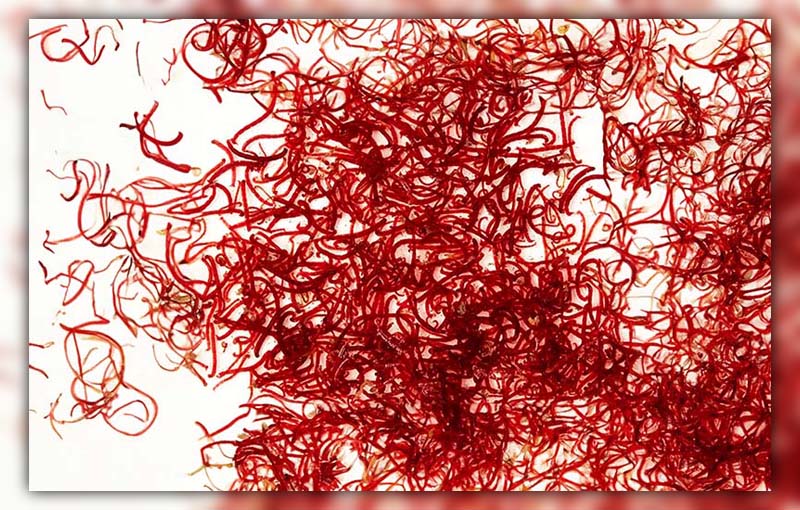
The bloodworm life cycle consists of four main stages: egg, larva, pupa, and adult midge. One of the primary challenges lies in getting midges to swarm and mate while in captivity.
Many hobbyists who attempt to raise their own bloodworms often use black worms or tubifex worms as parent stock to feed their fish.
While it’s an interesting challenge to try, you may not save much money unless you already have all the necessary equipment. Bloodworms thrive in freshwater ponds, so you would need to replicate this environment.
The simpler part of breeding bloodworms is raising them from their eggs. You can maintain a container with some soil and organic material, where you place chironomid eggs. Add water and keep it in a cool, dark place. By adding a small amount of organic material each week, you can eventually hatch insect larvae, which can be captured with a net and used as fish food.
The more complex aspect is achieving a continuous bloodworm breeding cycle. To allow some bloodworms to mature into adult midges and form swarms for laying new eggs, you would need a space akin to a greenhouse. This is because once the eggs hatch, they can be numerous and require ample space to thrive and reproduce.
Who Eats Bloodworms
As mentioned earlier, bloodworms occupy a relatively low position in the aquatic food chain, making them a favored food source for a wide range of fish, both in saltwater and freshwater environments. Most fish you keep in an aquarium are likely to have a strong appetite for bloodworms and can benefit from the valuable nutrients they offer.
Some fish species that particularly relish bloodworms include:
- Platy fish
- Discus fish
- Mollies
- Kuhli loaches
- Betta fish
- African cichlids
- Eels
Conclusion
In conclusion, understanding the nature and role of blood worms, often inquired as “What Are Blood Worms” can greatly enhance the health and vitality of your aquatic pets. These vibrant larvae of non-biting midge flies not only serve as a tantalizing treat for various aquarium fish but are also a nutritious supplement that mirrors the diet found in their natural habitats. As they occupy a vital position in the aquatic food chain, their presence can potentially benefit a myriad of other aquatic beings, making them a favored inclusion in the diet of aquarium inhabitants by enthusiasts around the world.
If your curiosity about “What Are Blood Worms” extends beyond their dietary benefits, we invite you to explore more insightful content such as this one at the National Park Aquarium. Here, our dedication lies in fostering a deeper understanding and appreciation for the aquatic world, a journey that is merely a click away. Stay curious, and join us in unfolding the wondrous aspects of underwater ecosystems!

